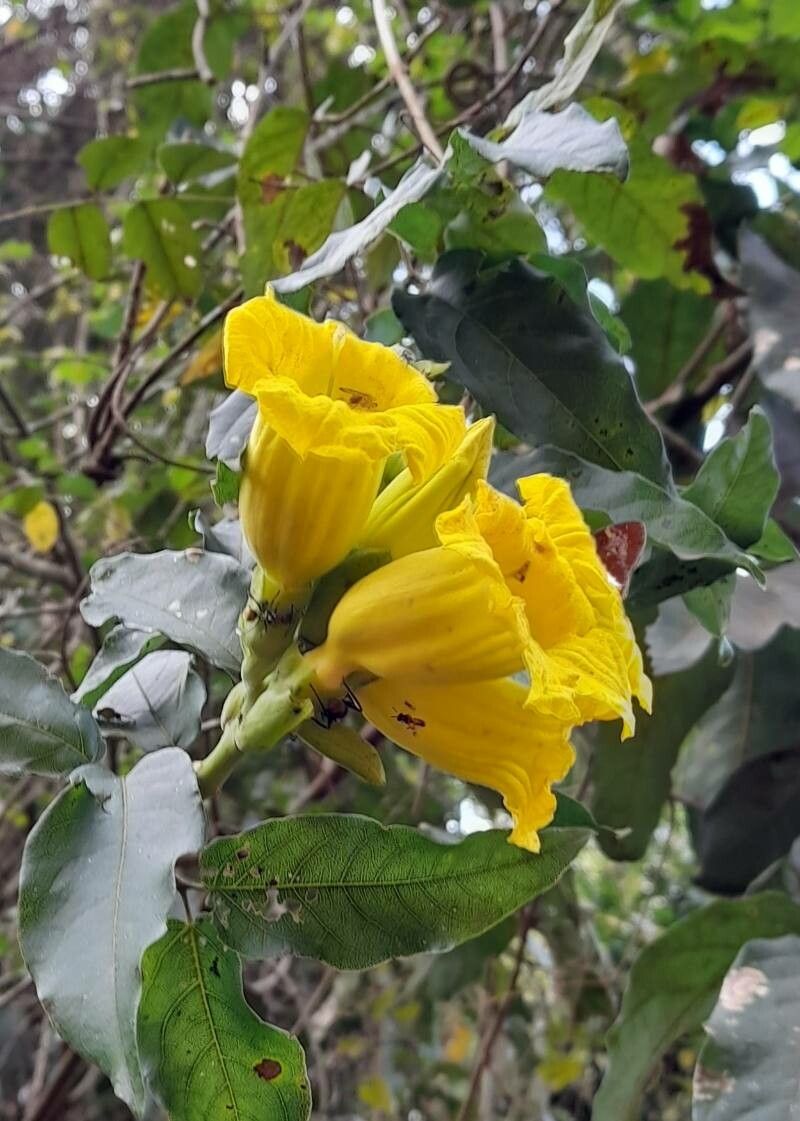Propagating the Brazilian Clockvine (Adenocalymma paulistarum): A Gardener’s Guide
Introduction
Adenocalymma paulistarum, commonly known as the Brazilian Clockvine, is a captivating climbing plant prized for its vibrant, trumpet-shaped flowers. These blooms, often a striking yellow-orange, unfurl sequentially throughout the day, earning it the "clockvine" moniker. Its vigorous growth habit and ease of cultivation (once established) have made it a popular choice among gardeners, but its propagation can present some unique challenges. This guide explores various methods of propagating Adenocalymma paulistarum, weighing their successes and difficulties.
Seed Germination:
Currently, there are no known reliable methods for seed germination propagation of Adenocalymma paulistarum. While the plant does produce seeds, their viability is reportedly low, and consistent germination rates have not been achieved under various tested conditions. Further research is needed to determine optimal germination conditions, if any exist.
Cuttings:
Cuttings offer a more promising approach to propagating Adenocalymma paulistarum.
Challenges: Rooting success rates can be variable. The semi-woody stems require specific conditions for successful root development.
Practical Tips: Take semi-hardwood cuttings (partially mature stems) in late spring or early summer. Use a sharp, clean knife or shears to make cuttings approximately 4-6 inches long, with at least two nodes. Remove lower leaves to prevent rot. Dip the cut ends in rooting hormone powder to stimulate root growth. Plant the cuttings in a well-draining propagation mix (e.g., perlite and peat moss) and maintain high humidity (e.g., using a humidity dome or misting regularly). Place cuttings in bright, indirect light.
Rewards: Cuttings offer a relatively quick and simple way to produce genetically identical plants to the parent plant, preserving desirable traits. This is an efficient method for creating multiple plants from a single healthy individual.
Division:
Division is generally not a viable method for propagating Adenocalymma paulistarum. This vine’s root system is typically not easily separated into independent, viable portions. Attempts at division are likely to result in damage to the parent plant and low survival rates for the divided portions.
Tissue Culture:
Tissue culture holds potential as a method for large-scale propagation of Adenocalymma paulistarum, overcoming the limitations of seed and cutting propagation.
Challenges: Tissue culture requires specialized equipment, sterile conditions, and a skilled technician. It also involves considerable upfront investment and ongoing maintenance.
Practical Tips: Establishing aseptic conditions is crucial. Explants (small plant tissues) are taken from actively growing stems or shoot tips. These are then placed on a nutrient-rich agar medium containing plant growth regulators to stimulate shoot and root formation.
Rewards: Tissue culture allows for the rapid production of a large number of genetically identical plants, making it suitable for commercial propagation or conservation efforts. It also offers the possibility of eliminating pathogens and producing disease-free plants.
Conclusion:
Propagating Adenocalymma paulistarum presents unique challenges. While seed germination is currently unreliable, cuttings provide a feasible, albeit somewhat variable, method for home gardeners. Tissue culture offers the most promising approach for large-scale propagation, although it requires specialized expertise and resources. The rewards of successfully cultivating this striking vine, however, outweigh the difficulties. Seeing the vibrant yellow-orange blooms unfurl each day is a testament to the gardener’s dedication and patience. For those willing to persevere through the challenges, the satisfaction of successfully propagating the Brazilian Clockvine is truly rewarding. Don’t be discouraged by initial setbacks; experiment with cuttings and, if resources allow, consider the potential of tissue culture to unlock the full propagation potential of this magnificent climber.

